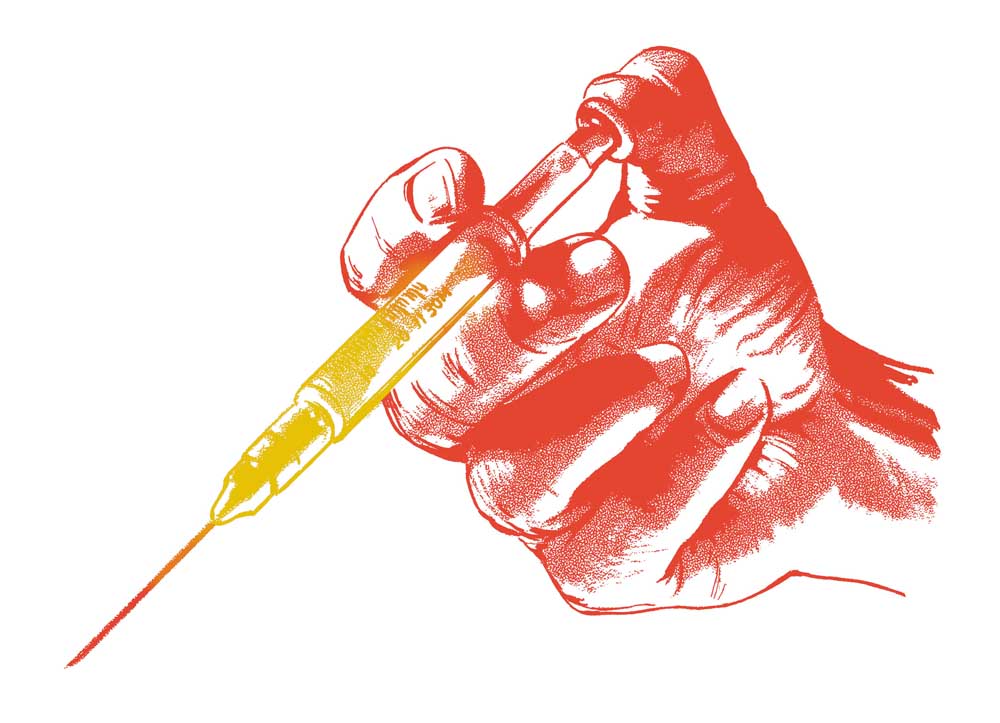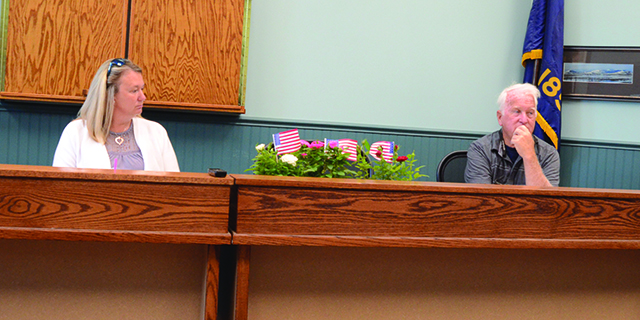Shingrix: The new shingles vaccine
Published 12:16 pm Tuesday, May 1, 2018

- Needle
Infection by varicella zoster virus (VZV) in children causes chickenpox. Adults who were infected as children can “reactivate” the infection, causing shingles.
Prior to 1995 when the chickenpox vaccine was first used, nearly every child had chickenpox; all are at risk for shingles as adults. Shingles is a localized painful skin rash with vesicles (fluid filled blisters) on one side of the body; the infection increases in frequency and severity with age.
Trending
Adults older than 80 have a 35 to 50 percent chance of developing shingles; approximately 10 percent will develop a long-lasting painful condition called post-herpetic neuralgia (PHN).
In 2006 the US Food and Drug Administration approved Zostavax (Merck), the first vaccine effective in reducing VZV infection and PHN in adults older than 50. Zostavax has significant limitations: its overall effectiveness at three years is around 50 percent, but effectiveness was much lower in older adults; effectiveness is lost by 10 years and it is not recommended for immunocompromised patients, such as those receiving prednisone.
A new VZV vaccine (Shingrex, Glaxo Smith Kline) was approved by the FDA in October 2017 for prevention of shingles in adults older than 50. Approval was based on two prospective, randomized, placebo-controlled and blinded clinical trials in approximately 30,000 adults. In contrast to Zostavax, the new vaccine is significantly more effective in preventing herpes zoster (approximately 97 percent at three years in those 50-70 years of age, and 91 percent in those older than 70) and about 90 percent effective in preventing PHN in all age groups.
Also, the duration of immunity appears to last longer (approximately 85 percent effective after four years in patients older than 70) and it can be given to immunocompromised patients.
The down sides of Shingrix? It requires two intramuscular injections two to six months apart, and it commonly causes injection-site adverse effects, including local pain, swelling and redness, and systemic symptoms, such as muscle aches, fatigue, headache and fever.
These usually resolve within two to three days. The number of serious adverse events in the Shingrix treatment group, such as death or reactions requiring hospitalization, was similar to placebo. As with any new drug, long-term safety must be monitored for unusual effects.
Trending
The Centers for Disease Control and Prevention and its Advisory Committee on Immunization Practices recommend that most adults older than 50 receive Shingrix, including patients who have previously received Zostavax. Those with chronic medical conditions, such as diabetes mellitus, rheumatoid arthritis, pulmonary diseases and others are especially encouraged to receive Shingrix.
It is necessary that you talk with your health care provider to discuss if Shingrix is appropriate for you. For example, immunocompromised individuals were not enrolled in the Shingrix studies, and your medical provider can help you make an informed decision if this applies.
Shingrix is available locally. The out-of-pocket cost depends on the specifics of your insurance and can range from as little as $20 per dose to as high as $160 per dose in those without insurance.
You should know: Sometimes new drugs (and immunizations) are substantially more effective than those previously available. Shingrix investigations studied a large number of worldwide participants, used an appropriate study design to answer the study hypothesis and offers convincing evidence of superiority to Zostavax (even though they were not directly compared).
Shingrix is relatively expensive and frequently causes transient adverse effects, but it appears to be highly effective in preventing a common and potentially serious disease. Eligible adults are advised to discuss Shingrix with their provider, review their insurance plan and seriously consider receiving it.
The opinions expressed are those of the author(s). The authors report no conflicts of interest.









